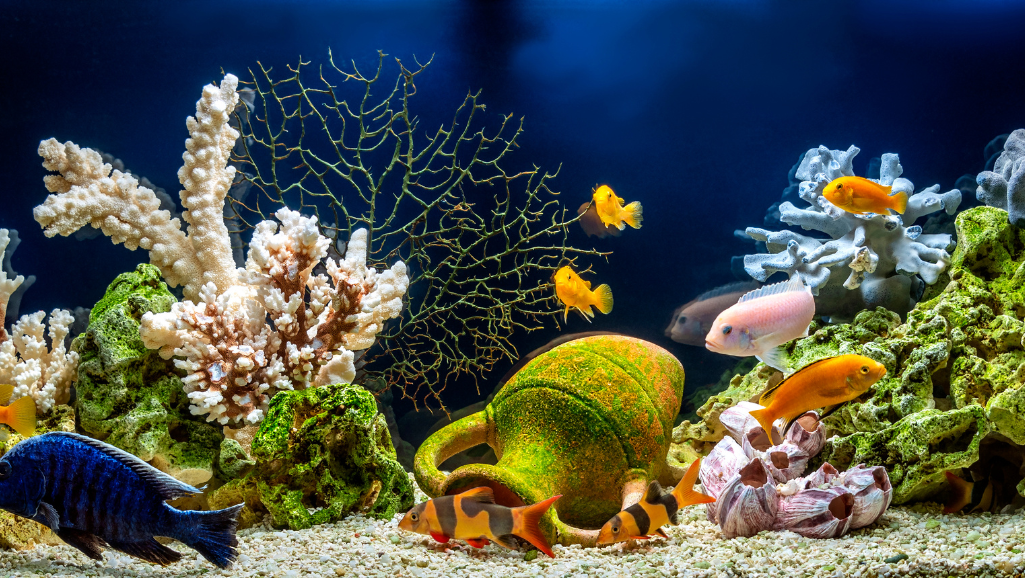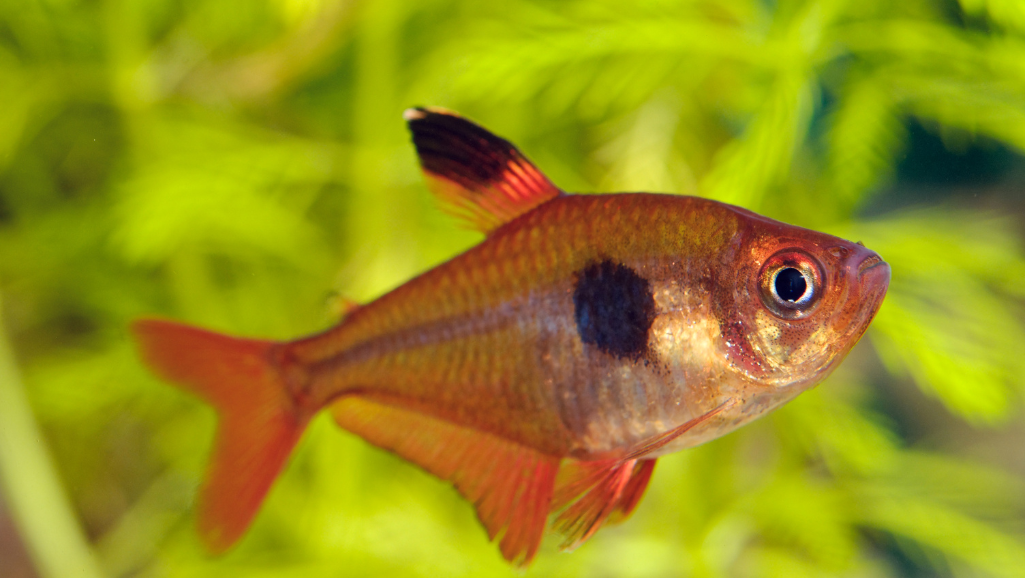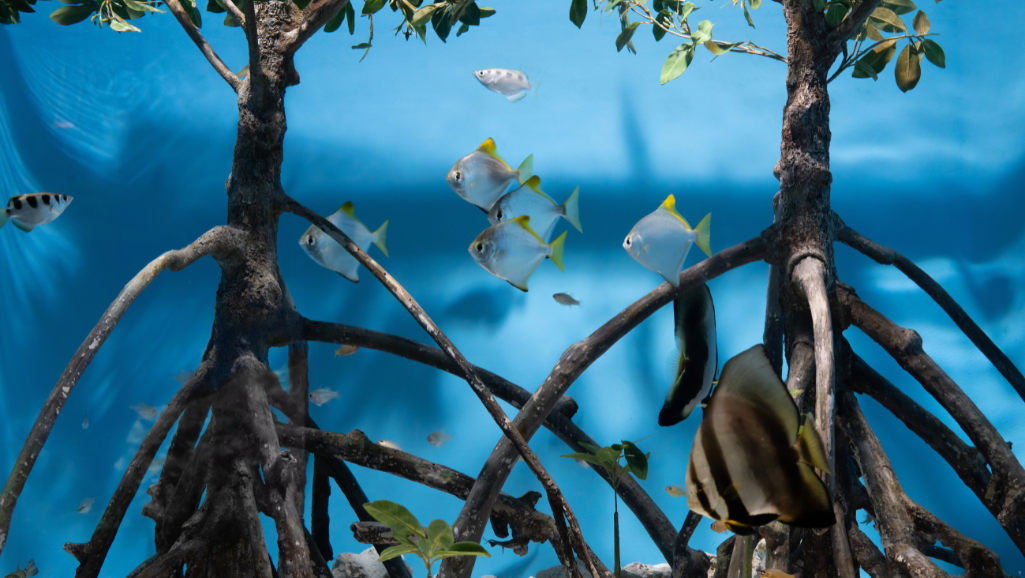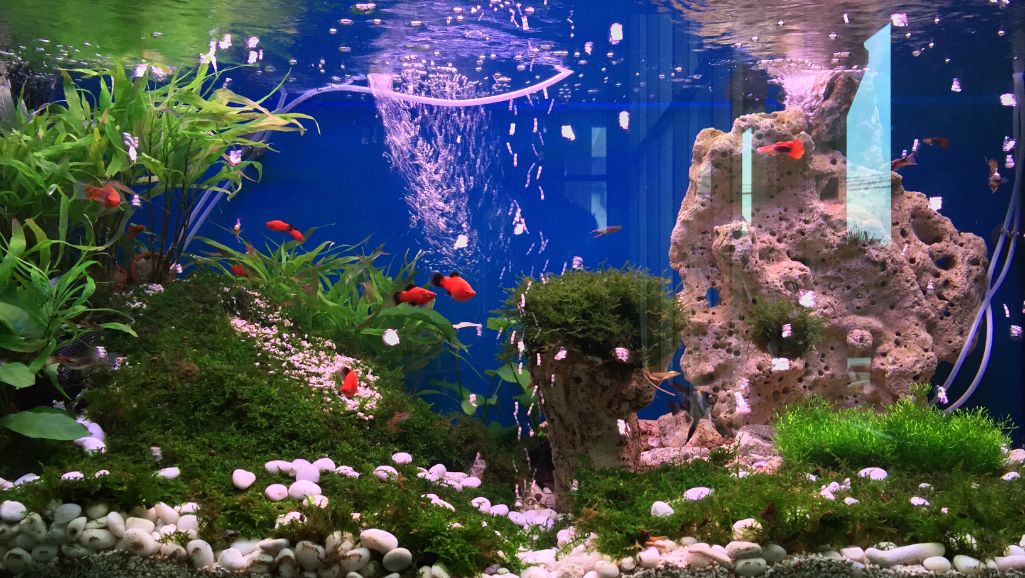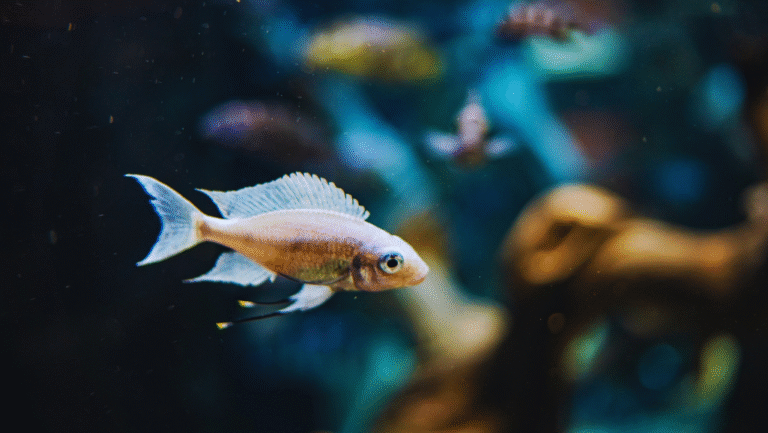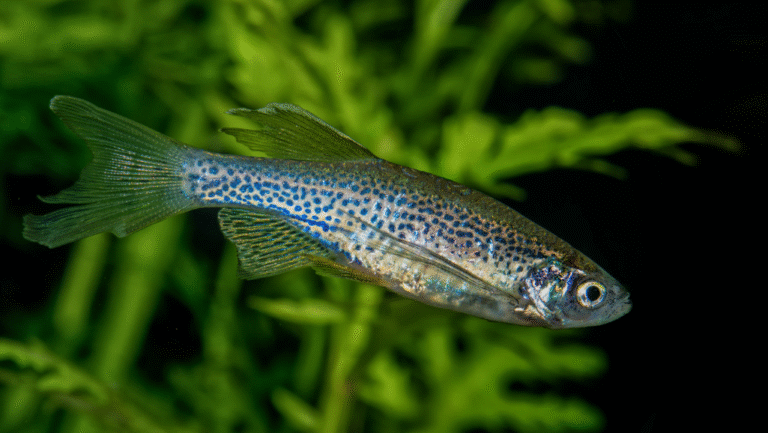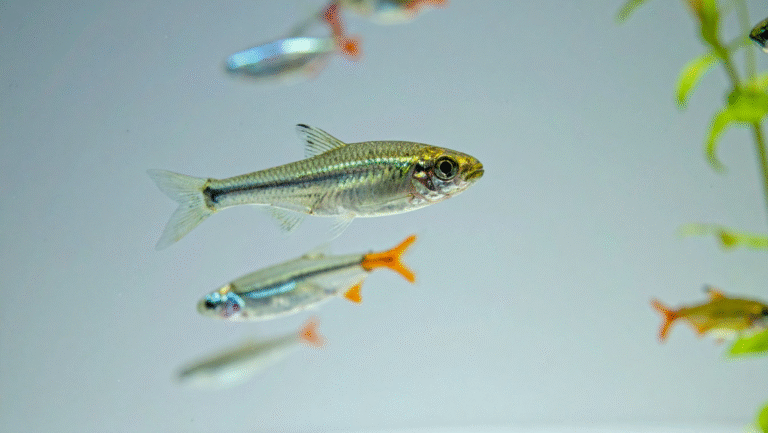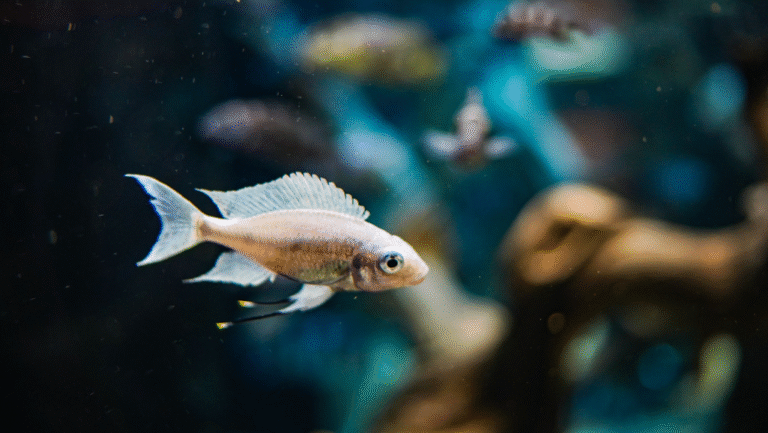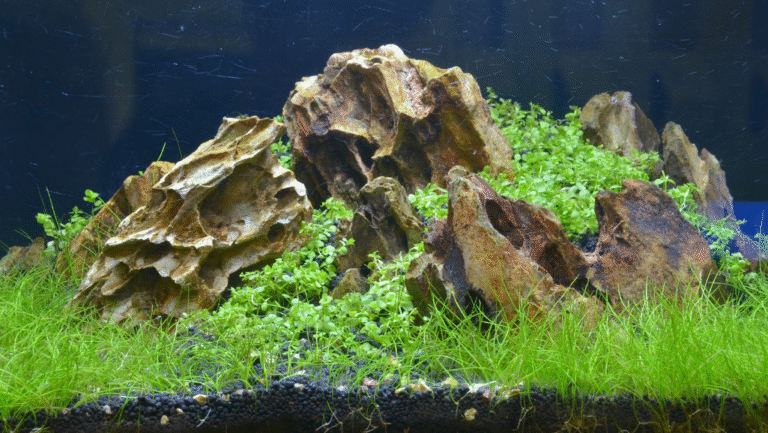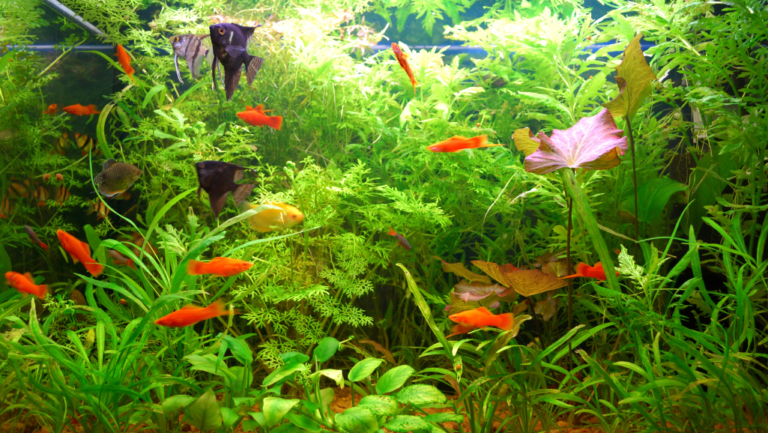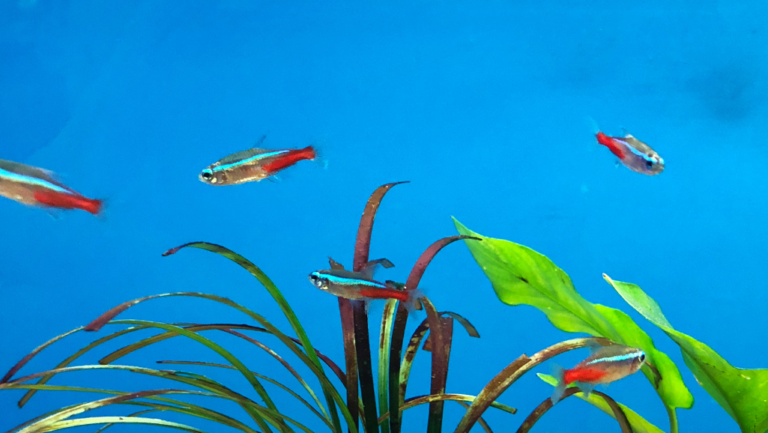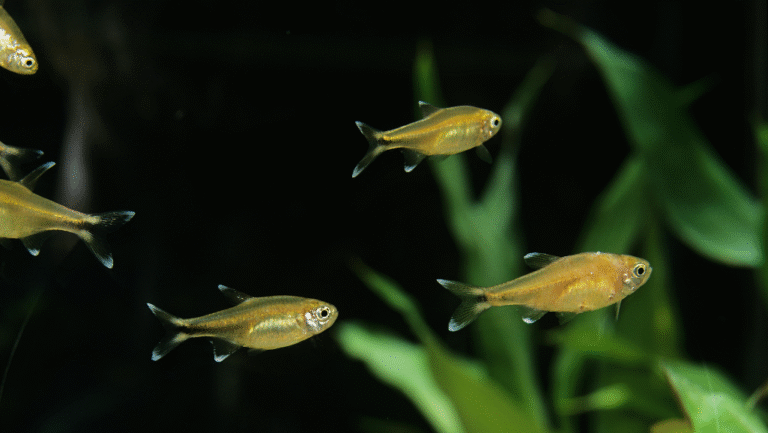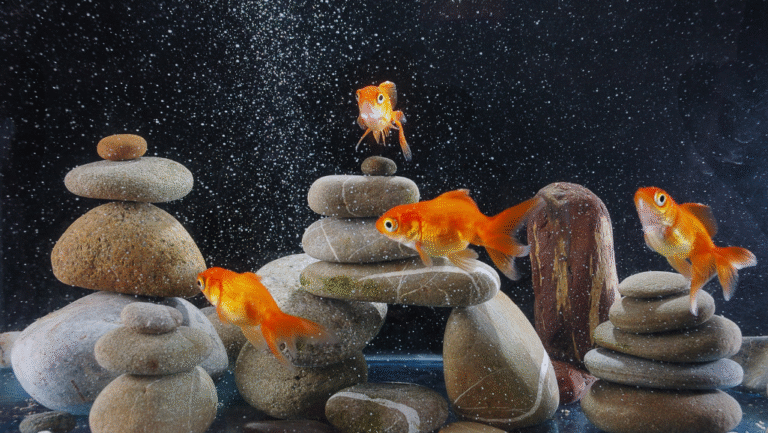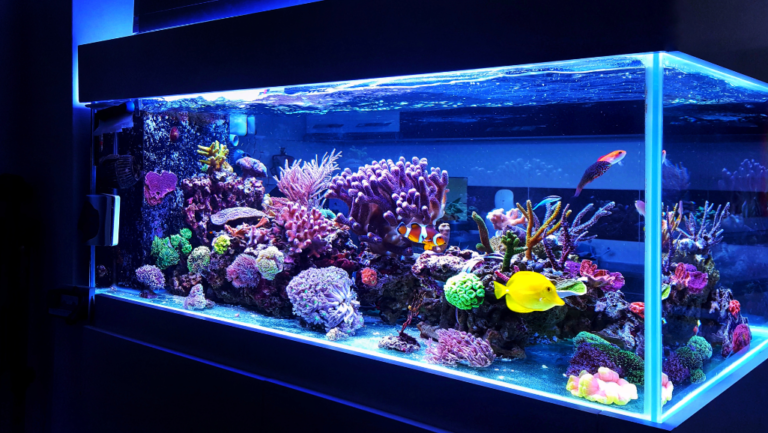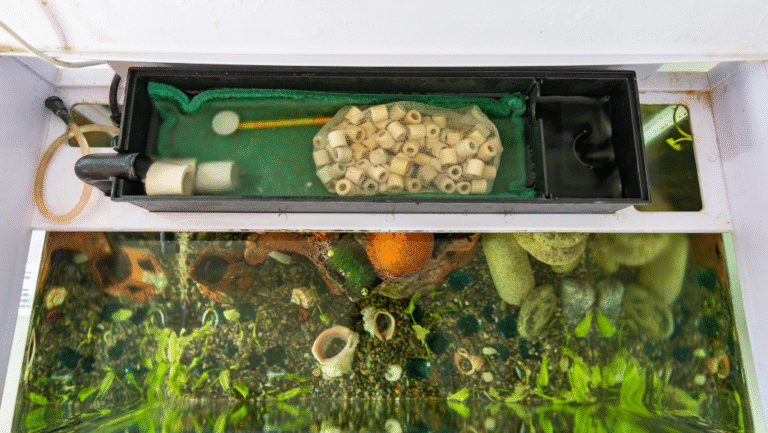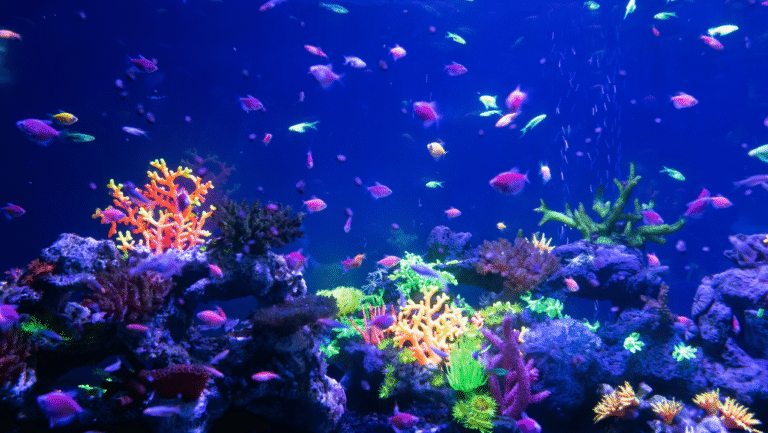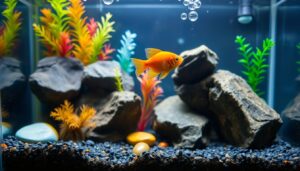Creating a vibrant and thriving tank starts with choosing the right species. This guide introduces a diverse selection of popular and unique options, from colorful tetras to hardy corydoras. Whether you’re a beginner or an experienced hobbyist, there’s something for everyone.
Each species comes with specific care needs, including tank size, water parameters, and compatibility. For example, neon tetras thrive in groups, while bettas prefer solitude. Understanding these details ensures a healthy and harmonious environment for your aquatic pets.
This section sets the stage for an in-depth exploration of scientific names, common names, and care tips. By the end, you’ll have the knowledge to create a stunning tank that suits your style and skill level.
Key Takeaways
- Top 100 List of Freshwater Aquarium Fish.
- Discover a wide variety of species for your tank.
- Learn about specific care requirements for each fish.
- Understand the importance of scientific and common names.
- Find tips for beginners and experienced hobbyists.
- Explore examples like tetras, corydoras, and livebearers.
Introduction to Freshwater Aquarium Fish
The appeal of freshwater species lies in their diversity and adaptability to home environments. From vibrant tetras to hardy corydoras, these fish bring life and beauty to any tank. Whether you’re a beginner or an experienced hobbyist, there’s a species to match your skill level and preferences.
Historically, keeping fish has been a popular pastime, but modern trends focus on creating balanced ecosystems. Understanding the scientific name and common name of each species is crucial. This knowledge helps ensure proper care and compatibility within your community tank.
Key factors like tank size, water quality, and community dynamics play a significant role in maintaining a healthy environment. For example, tetras thrive in groups, while corydoras prefer a sandy substrate. Balancing aesthetics with proper care is essential for a thriving aquarium.
This article will guide you through the essentials of fish care, from selecting the right species to maintaining optimal water conditions. Whether you’re drawn to the color of neon tetras or the unique behavior of corydoras, you’ll find valuable insights to enhance your hobby.
Essentials for Setting Up a Freshwater Aquarium
Setting up a thriving aquatic environment begins with understanding the essentials. A well-planned tank ensures your fish stay healthy and happy. From choosing the right size to maintaining optimal water conditions, every detail matters.
Tank Size and Equipment Requirements
Selecting the correct tank size is the first step. A 20-gallon tank is ideal for beginners, while larger species may need 30 gallons or more. Remember, the size of your tank directly impacts the well-being of your fish.
Essential equipment includes a reliable filter, heater, and lighting system. For example, a filter should process the entire water volume at least four times per hour. A 20-gallon tank requires a flow rate of 80 gallons per hour (GPH).
Heaters are equally important. Aim for 5 watts per gallon in smaller tanks and 3 watts per gallon in larger ones. Proper lighting, like a 30-watt fluorescent fixture, supports both fish and plants.
Optimal Water Parameters and Filtration
Maintaining the right water conditions is crucial. Most fish thrive in temperatures between 74°F and 77°F. Use a heater to keep the range stable and avoid sudden fluctuations.
Filtration systems play a key role in water quality. A good filter removes waste and provides oxygenation. For a 20-gallon tank, choose a filter rated at 60-100 GPH. Regular testing of pH, ammonia, and nitrite levels ensures a healthy environment.
“A balanced tank starts with proper filtration and consistent water testing.”
Substrate, like gravel, supports beneficial bacteria. Use 1 pound of gravel per gallon for a 1-inch layer. Live plants also help by adding oxygen and reducing carbon dioxide.
By focusing on these essentials, you’ll create a stable and thriving habitat for your aquatic pets.
Understanding Fish Care and Maintenance
Proper care and maintenance are the backbone of a healthy aquatic environment. Whether you’re a beginner or an experienced hobbyist, understanding the needs of your species ensures their longevity and happiness. This section covers essential aspects of feeding, nutrition, and health management.
Feeding and Nutrition Guidelines
Different species have unique dietary needs. For example, GloFish Danios thrive on tropical flake foods, while Neon Tetras benefit from frozen protein sources. Understanding these requirements helps you provide a balanced diet.
Here are some key tips for feeding:
- Feed small portions twice daily to avoid overfeeding.
- Use a mix of flakes, pellets, and live foods for variety.
- Observe your fish during feeding to ensure they’re eating properly.
Overfeeding can lead to poor water quality, so always remove uneaten food promptly.
Preventive Health and Disease Management
Preventive care is crucial for maintaining a healthy tank. Regular cleaning and monitoring of water parameters can prevent common issues like fin rot or ich.
Follow these steps for effective disease management:
- Quarantine new fish before introducing them to the main tank.
- Test range water parameters weekly to ensure stability.
- Use medications only as directed and avoid overuse.
“A clean tank and balanced diet are the best defenses against disease.”
By staying proactive, you can ensure your aquarium fish remain vibrant and healthy for years to come.
Exploring Diverse Freshwater Fish Species
Diving into the world of aquatic pets reveals a stunning variety of species to explore. From the vibrant color of neon tetras to the unique patterns of danios, each fish brings something special to your tank. Understanding their physical traits, such as size and color, helps you create a visually appealing and balanced environment.
Knowing both the scientific name and common name of each species is essential. For example, the danio is scientifically known as Danio rerio, while the tetra family includes species like Paracheirodon innesi. This knowledge ensures proper care and compatibility in your tank.
Each species has unique traits that make it appealing. Tetras are known for their schooling behavior, while cichlids display fascinating territorial habits. These characteristics add depth and interest to your aquatic setup.
Water parameters also play a crucial role. Some fish, like tetras, thrive in slightly acidic water, while others, such as danios, prefer neutral pH levels. Matching these conditions to your tank ensures a healthy environment.
“A diverse tank not only looks stunning but also creates a balanced ecosystem.”
When mixing species, consider their compatibility. Tetras and danios often coexist peacefully, while cichlids may require more space. Researching their behaviors and needs helps avoid conflicts.
Exploring the variety of aquatic life opens up endless possibilities for your tank. From their color and patterns to their unique behaviors, each fish adds a new dimension to your hobby. Dive deeper into detailed species profiles to discover even more options for your aquatic world.
In-Depth Look at Freshwater Catfish Varieties
Catfish are fascinating additions to any aquatic setup, offering unique behaviors and adaptability. From the small and peaceful Corydoras to the larger Plecos, these species bring both functionality and beauty to your tank. Understanding their needs ensures a thriving environment.
Popular Catfish: Corydoras, Plecos, and More
Corydoras, often called “Cory Cats,” are a favorite among hobbyists. These small, bottom-dwelling fish thrive in groups and prefer a sandy substrate. Their scientific name, Corydoras paleatus, reflects their unique traits. They require a minimum tank size of 10 gallons and a water temperature of 72-78°F.
Plecos, like the Bristlenose Pleco, are known for their algae-eating habits. These hardy species need a larger tank, typically 30 gallons or more. They prefer slightly acidic to neutral water with a pH of 6.5-7.5. Their common name, Bristlenose, comes from their distinctive facial features.
Behavior and Tank Compatibility Tips
Catfish are generally peaceful and thrive in community setups. Corydoras are social and should be kept in groups of six or more. They coexist well with tetras and other small fish. Plecos, on the other hand, can be territorial and need ample hiding spots.
When designing your aquarium, consider the size and behavior of your catfish. Provide caves or driftwood for Plecos and open spaces for Corydoras to explore. Maintaining stable water conditions is crucial for their health.
“A well-planned tank ensures your catfish thrive and contribute to a balanced ecosystem.”
Feeding catfish is straightforward. Corydoras enjoy sinking pellets and occasional live foods, while Plecos benefit from algae wafers and fresh vegetables. Regular maintenance, like water changes and filter cleaning, keeps your tank healthy.
By understanding the unique needs of these species, you can create a vibrant and harmonious aquatic environment. Whether you choose Corydoras or Plecos, these catfish are sure to enhance your hobby.
Vibrant Tetra Varieties for Community Tanks
Tetras are a vibrant and dynamic choice for any community tank, offering a splash of color and lively energy. These small, peaceful species are perfect for creating a harmonious and visually stunning environment. Whether you’re drawn to the shimmering hues of neon tetras or the bold patterns of black tetras, there’s a variety to suit every tank.
Neon, Cardinal, and Black Tetra Characteristics
Neon tetras are known for their striking blue and red stripes, making them a standout in any aquarium. Cardinal tetras, with their similar appearance, feature a deeper red stripe that extends the length of their body. Black tetras, on the other hand, offer a sleek, monochromatic look with their dark, almost metallic bodies.
Each of these species thrives in slightly acidic water with a pH range of 6.8 to 7.8. They prefer temperatures between 74°F and 77°F, which mimics their natural habitat. Keeping them in groups of six or more enhances their color and reduces stress.
Schooling Behavior and Tank Requirements
One of the most fascinating traits of tetras is their natural schooling behavior. This not only creates a mesmerizing display but also helps them feel secure. A tank size of at least 20 gallons is recommended to provide ample space for their activities.
Here are some key tips for maintaining a healthy tetra tank:
- Use a reliable filter to maintain clean water and proper oxygenation.
- Include live plants and hiding spots to mimic their natural environment.
- Test water parameters weekly to ensure stability.
“A well-maintained tank ensures your tetras thrive and display their full color potential.”
By understanding their needs and behaviors, you can create a thriving community tank that showcases the beauty of these vibrant fish.
Showcasing Freshwater Cichlids and Gouramis
Freshwater cichlids and gouramis bring unique charm and personality to any tank. These species are celebrated for their vibrant color and engaging behaviors, making them a favorite among hobbyists. Whether you’re drawn to the bold patterns of cichlids or the delicate fins of gouramis, each fish offers something special.
Understanding their scientific name and common name is essential for proper care. For example, the dwarf gourami (Trichogaster lalius) is known for its bright hues, while cichlids like the Convict Cichlid (Amatitlania nigrofasciata) display striking patterns. These details help ensure compatibility and health in your aquarium.
Distinctive Features of Dwarf Gourami and Cichlids
The dwarf gourami stands out with its vivid color and flowing fins. Typically reaching 2 inches in size, it thrives in water temperatures of 72-82°F. Cichlids, on the other hand, are known for their diverse appearances. For instance, the Convict Cichlid grows to about 4 inches and features bold black and white stripes.
Both species have unique behaviors. Dwarf gouramis are peaceful and thrive in community setups, while cichlids can be territorial. Understanding these traits helps you create a harmonious environment.
Comparing Temperaments and Space Needs
Temperament plays a key role in tank compatibility. Dwarf gouramis are generally calm, making them ideal for mixed species tanks. Cichlids, however, may require more space due to their territorial nature. A minimum tank size of 30 gallons is recommended for cichlids, while dwarf gouramis do well in smaller setups.
Maintaining optimal water conditions is crucial. Cichlids prefer slightly acidic water with a pH of 6.5-7.5, while gouramis thrive in neutral to slightly acidic environments. Regular testing and maintenance ensure a healthy habitat.
“Understanding each species’ unique needs ensures a thriving and balanced tank.”
For more insights on cichlids and other species, explore our detailed guides. Whether you’re a beginner or an experienced aquarist, these tips will help you create a stunning and harmonious aquatic environment.
Unique Characteristics of Small Aquarium and Livebearing Fish
Small and colorful species are a fantastic choice for any tank, offering beauty and simplicity. These fish are perfect for hobbyists of all levels, especially beginners, due to their manageable size and low maintenance needs. Livebearers like guppies, mollies, and platys are particularly popular for their vibrant color and prolific breeding habits.
Benefits of Keeping Small and Colorful Species
Livebearers, such as the Mickey Mouse Platy and Pearl Danio, add a dynamic element to your tank. Their size makes them ideal for smaller setups, and their color creates a visually appealing environment. These species are also known for their rapid breeding, which can quickly populate your tank with lively additions.
Care for these fish is straightforward. They thrive in temperatures between 70-82°F and prefer slightly alkaline water with a pH of 7.0-8.5. Their diet is simple, consisting of flakes, pellets, and occasional live foods. Regular water changes and a clean tank ensure their vibrant color and health remain intact.
“Small fish like guppies and mollies are not only beautiful but also incredibly resilient, making them perfect for beginners.”
When selecting tankmates, choose peaceful species that complement their behavior. Tetras and danios are excellent companions, as they share similar water requirements and temperaments. Avoid larger or aggressive fish that may intimidate or harm them.
Whether you’re a beginner or an experienced aquarist, small and colorful fish offer endless possibilities. Their ease of care, vibrant appearance, and community-friendly nature make them a standout choice for any tank.
Comprehensive List of Freshwater Aquarium Fish
Exploring the world of aquatic species opens up endless possibilities for your tank. Whether you’re a beginner or an experienced hobbyist, understanding the variety of options available ensures a balanced and thriving environment. This section provides a detailed reference guide to help you make informed choices.
Below is a curated selection of popular species, including their scientific name, common name, size, temperature range, and tank requirements. This list is designed to serve as a quick reference for hobbyists at all levels.
“Accurate and up-to-date information is the foundation of a successful aquarium.”
Each fish has unique characteristics that make it suitable for specific setups. For example, Neon Tetras thrive in slightly acidic water, while Corydoras prefer a sandy substrate. Understanding these details ensures compatibility and health in your tank.
Here’s a snapshot of some popular species:
- Neon Tetra (Paracheirodon innesi): 1.5 inches, 70-81°F, 10-gallon tank.
- Betta (Betta splendens): 3 inches, 78-80°F, 5-gallon tank.
- Corydoras (Corydoras paleatus): 2.5 inches, 72-78°F, 10-gallon tank.
- Guppy (Poecilia reticulata): 2 inches, 72-82°F, 10-gallon tank.
- Angelfish (Pterophyllum scalare): 6 inches, 76-82°F, 30-gallon tank.
This list is updated to reflect current trends and species availability. Whether you’re drawn to the vibrant color of tetras or the unique behavior of catfish, this guide will help you create a stunning and harmonious aquatic environment.
Exotic and Rare Freshwater Species for the Adventurous
For those seeking something extraordinary, exotic species offer a unique challenge and reward. These uncommon varieties bring a sense of wonder to any tank, captivating hobbyists with their striking color and distinctive behaviors. From the vibrant Flowerhorn Cichlid to the elusive Zebra Pleco, these fish are perfect for experienced aquarists looking to elevate their hobby.
Identifying Uncommon Varieties in the Hobby
Exotic species like the Flowerhorn Cichlid (scientific name: Amphilophus hybrid) are known for their bold patterns and interactive personalities. Another standout is the Zebra Pleco (Hypancistrus zebra), a small but striking fish native to Brazil’s fast-flowing rivers. These species require specific conditions, such as well-oxygenated water and ample hiding spots, to thrive.
Here are some key characteristics of these rare species:
- Flowerhorn Cichlid: Vibrant color, territorial behavior, requires a 50-gallon tank.
- Zebra Pleco: Unique black-and-white stripes, prefers fast-flowing water, needs a 30-gallon tank.
- Black Ghost Knifefish: Electrolocation abilities, requires a 100-gallon tank with dense vegetation.
Keeping these fish comes with challenges. Their specialized needs, such as precise water parameters and unique diets, require dedication. However, the rewards are immense. Watching a Flowerhorn Cichlid interact with its environment or a Zebra Pleco explore its habitat is truly captivating.
“Exotic species bring a new level of excitement and complexity to the hobby, making them ideal for experienced aquarists.”
Before adding these species to your aquarium, thorough research is essential. Understanding their scientific name, common name, and specific care requirements ensures a successful experience. For more insights on a diverse range of tropical and freshwater, explore our detailed guides.
Exotic fish are often rare and may require sourcing from specialized breeders. Their unique traits and higher care levels make them a worthwhile investment for those ready to take their hobby to the next level.
Optimizing Aquarium Environment and Water Quality
Maintaining a healthy aquatic environment requires attention to detail and consistent care. Proper water quality is essential for the well-being of your aquatic pets. Regular testing and maintenance ensure a stable and thriving ecosystem.
Maintenance Best Practices and Water Testing
Testing your water regularly is the foundation of a healthy tank. Key parameters like pH, ammonia, nitrite, and nitrate levels should be monitored weekly. Most species thrive in a pH range of 6.8 to 7.8, while ammonia and nitrite levels should remain at 0 ppm.
Here are some essential maintenance tips:
- Perform partial water changes of 15-25% every one to two weeks.
- Use a reliable filtration system to keep the water clean and oxygenated.
- Test for phosphate levels to prevent algae growth, keeping them below 0.2 ppm.
Efficient filtration is crucial for maintaining optimal conditions. A good filter should process the entire tank volume at least four times per hour. For a 20-gallon setup, aim for a flow rate of 80 gallons per hour (GPH).
“A balanced aquarium starts with consistent water testing and proper filtration.”
For beginners, start with a simple testing kit and gradually expand your knowledge. Understanding the scientific name and specific needs of your species helps tailor care routines. For example, tetras prefer slightly acidic water, while cichlids thrive in neutral pH levels.
Daily tasks include feeding your fish and checking equipment. Weekly routines should focus on water testing and partial changes. Monthly maintenance involves deep cleaning the filter and inspecting the substrate. These practices ensure a healthy and vibrant community tank.
By following these guidelines, you can create a stable and thriving environment for your aquatic pets. Regular care and attention to detail are the keys to long-term success.
Feeding, Nutrition, and Dietary Tips for a Healthy Tank
A well-balanced diet is the cornerstone of a healthy aquatic environment. Providing the right food ensures your fish thrive and display their best colors. Whether you’re a beginner or an experienced hobbyist, understanding dietary needs is essential for maintaining a vibrant aquarium.
Different species have unique dietary preferences. Herbivores, like mollies, thrive on plant-based foods, while carnivores, such as GloFish Danios, require protein-rich diets. Omnivores, like tetras, benefit from a mix of both. Tailoring your feeding plan to these needs ensures optimal health.
Mixing flake, pellet, frozen, and live foods provides a balanced diet. Flakes are great for surface feeders, while sinking pellets cater to bottom dwellers. Frozen foods, like bloodworms, offer high nutrition and are ideal for carnivorous species. Live foods, such as brine shrimp, add variety and stimulate natural behaviors.
Feeding frequency and portion control are crucial. Most fish do well with two small meals daily. Overfeeding can lead to poor water quality, so ensure all food is consumed within five minutes. For nocturnal species, consider feeding after lights out.
“A varied diet not only supports health but also enhances the natural behaviors and colors of your fish.”
Common nutritional issues, like bloating or color loss, can often be resolved by adjusting the diet. For example, livebearers benefit from Spirulina-rich foods, while tetras thrive with color-enhancing supplements. Regularly monitoring your aquarium’s range water parameters ensures a stable environment.
For more detailed guidance on feeding practices, visit this resource. Additionally, explore AquaJoyLife for comprehensive tips on maintaining a thriving aquatic ecosystem.
By focusing on tailored feeding plans and maintaining optimal water conditions, you can ensure your fish remain healthy and vibrant for years to come.
Designing a Stunning Aquascape for Your Aquarium
Aquascaping transforms your tank into a living masterpiece, blending art and nature seamlessly. This creative process involves arranging plants, rocks, and other elements to create a visually appealing and balanced environment. Whether you’re a beginner or an experienced hobbyist, aquascaping offers endless possibilities to enhance your aquarium.
Incorporating Plants and Decorative Elements
Live plants are the heart of any aquascape, adding color and life to your tank. Popular choices include Hemianthus callitrichoides (Dwarf Baby Tears) and Eleocharis acicularis (Dwarf Hairgrass). These plants not only enhance aesthetics but also improve water quality by absorbing excess nutrients.
Decorative elements like rocks and driftwood add depth and character. The Iwagumi style, for example, uses an odd number of stones to create a natural, asymmetrical look. The primary stone, known as the Oyaishi, should occupy two-thirds of its height for optimal balance.
Lighting and Layout Considerations
Lighting plays a crucial role in plant growth and fish coloration. A well-lit tank enhances the vibrant hues of your aquatic pets and supports photosynthesis in plants. Aim for 30-60% shadow coverage to create a natural, layered effect.
When planning your layout, consider the size and behavior of your species. For example, tetras thrive in densely planted areas, while larger fish need open swimming spaces. A triangular pattern, sloping from one side to the other, creates a dynamic and visually appealing design.
“A well-designed aquascape not only looks stunning but also promotes the health and well-being of your aquatic pets.”
Maintenance is key to preserving your aquascape. Regular trimming, water changes, and algae control ensure your tank remains vibrant. By combining creativity with proper care, you can create a breathtaking underwater world that captivates both you and your fish.
Building a Thriving Community Tank with Compatible Species
A harmonious community tank begins with careful selection of compatible species. Choosing the right tankmates ensures a peaceful and vibrant environment where all inhabitants can thrive. Whether you’re a beginner or an experienced aquarist, understanding the key factors in compatibility is essential.
Tips for Selecting Friendly Tankmates
When building a community tank, consider traits like temperament, size, and dietary needs. Peaceful species like Neon Tetras, Guppies, and Corydoras are excellent choices for beginners. These fish coexist well and share similar water requirements, making them ideal for mixed setups.
Here are some factors to keep in mind:
- Temperament: Avoid mixing aggressive and peaceful species to prevent conflicts.
- Size: Ensure all tankmates are similar in size to avoid predation.
- Dietary Needs: Choose species with compatible feeding habits to simplify care.
For example, Neon Tetras and Guppies thrive in groups and prefer slightly acidic water. Corydoras, known for their peaceful nature, are perfect for bottom-dwelling roles. Researching the scientific name and common name of each species ensures accurate identification and proper care.
Preventing territorial disputes is crucial. Provide ample hiding spots and a well-planned layout. Plants and decorations not only enhance aesthetics but also create safe zones for shy fish. Larger tanks offer more space, reducing competition and stress among inhabitants.
“A well-balanced community tank requires thoughtful planning and regular monitoring to ensure harmony.”
For beginners, starting with hardy species like Guppies or Mollies is a great idea. These livebearers are resilient and adapt well to various conditions. Experienced aquarists can explore more diverse combinations, such as adding Cherry Shrimp for natural algae control.
For more insights on selecting the best fish for your setup, check out our guide on best freshwater fish. By focusing on compatibility and proper care, you can create a thriving aquarium that brings joy and beauty to your home.
Expert Insights and Additional Resources for Fish Keepers
Expanding your knowledge in fishkeeping opens doors to creating a thriving aquatic environment. Whether you’re a beginner or an experienced hobbyist, learning from trusted sources ensures your tank remains healthy and vibrant. This section provides expert insights, recommended resources, and tips to elevate your skills.
Learning from Trusted Web Sources
Staying informed is key to successful fishkeeping. Websites like The Spruce Pets and articles by Adrienne Legault offer valuable guidance on topics like water quality, feeding, and maintenance. These resources are perfect for both new and advanced fishkeepers looking to refine their techniques.
For example, understanding the scientific name and common name of your species helps ensure proper care. Trusted forums and blogs also provide case studies and success stories from established hobbyists, offering practical advice and inspiration.
“Continual learning is the foundation of a thriving aquarium. Stay curious and always seek reliable information.”
Current trends in fishkeeping emphasize sustainable practices, such as ethical sourcing and eco-friendly tank setups. For more on this, explore sustainable practices in freshwater fishkeeping.
Recommended Resources and Tips
Here are some top resources to enhance your fishkeeping journey:
- Books: “The Simple Guide to Freshwater Aquariums” by David E. Boruchowitz.
- Websites: The Spruce Pets, Aquarium Co-Op, and Fishkeeping World.
- Forums: Reddit’s r/Aquariums and Fishlore.
Experts recommend regular testing of range water parameters and adjusting feeding routines based on your species’ needs. For example, betta fish thrive on protein-rich food, while livebearer species benefit from plant-based diets.
By leveraging these resources and staying updated on best practices, you can ensure your aquarium remains a thriving ecosystem. Remember, the key to success is continual learning and adapting to new insights.
Conclusion
Building a thriving aquatic ecosystem requires careful planning and attention to detail. This guide has covered essential aspects, from selecting the right equipment to understanding the unique needs of each species. By focusing on scientific names and common names, you can ensure proper care and compatibility in your tank.
Maintaining optimal water quality and preventive health practices are crucial for a healthy environment. Regular testing and balanced feeding routines keep your fish vibrant and active. Creating a harmonious community setup with compatible species enhances the beauty and balance of your aquarium.
Expert insights and continuous learning are key to success in this rewarding hobby. Refer back to the detailed tables and tips provided for further guidance. Whether you’re a beginner or an experienced hobbyist, a well-planned and maintained tank can bring years of enjoyment.
Thank you for exploring this guide. We invite you to revisit for updates and new insights. Dive into the world of freshwater aquatics and discover the joy of creating a thriving underwater world.
